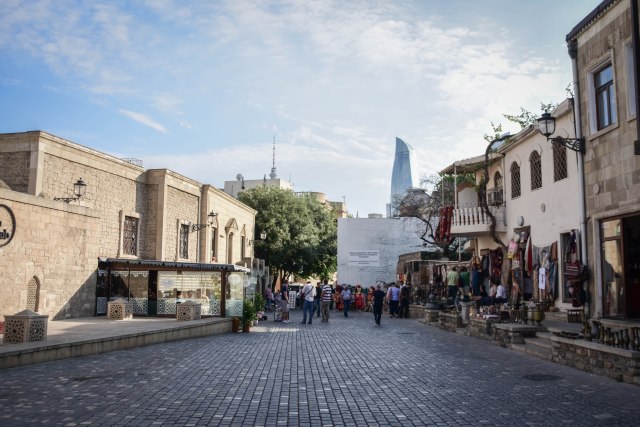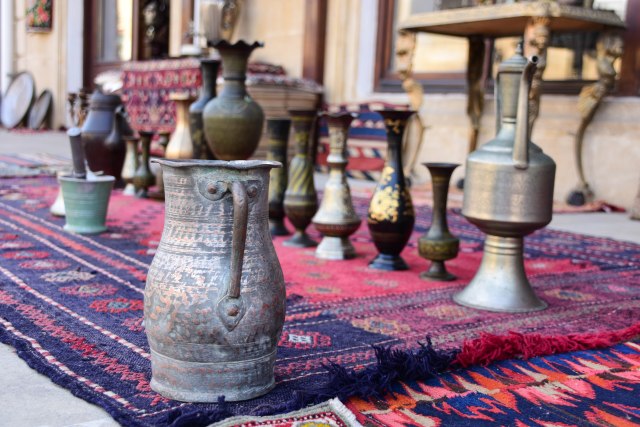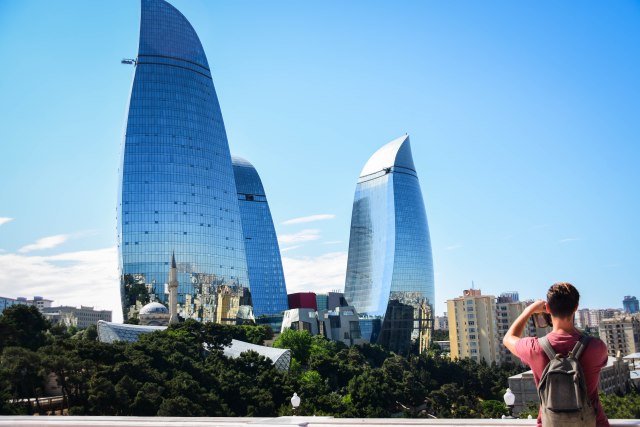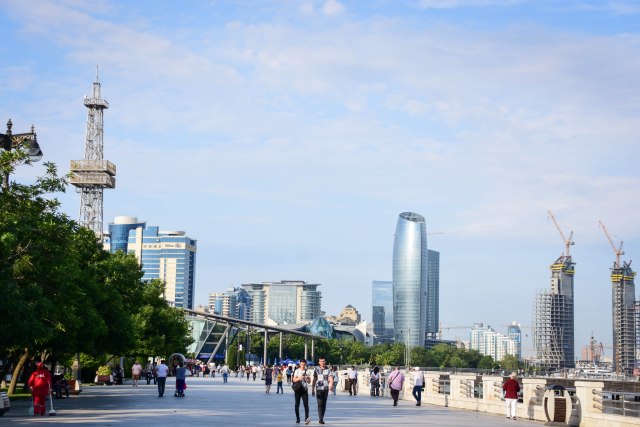If I asked you to locate Azerbaijan on a world map, could you? Don’t worry if you can’t – there’s lots of people that don’t know either.
But if you’re an avid traveller, you’re sure to find out about this country soon.
Azerbaijan is starting to emerge as a staple on the intrepid backpacker scene with its strategic location between Georgia, Russia and the Caspian Sea – the gateway to Central Asia.
When I first arrived in Azerbaijan’s capital of Baku, I didn’t know what to think.
It’s not quite Russia. It’s not quite Europe. It’s definitely not Asia. And I imagine Dubai started out looking like Baku.
As you walk around Baku, it’s a confusing mix of old and new.
You have the compact but beautiful Old City, juxtaposed against a backdrop of the modern Flame Towers dominating the skyline.
There’s the Caspian Sea facing promenade filled with a ferris wheel and large buildings – then you hit the pedestrian streets next to the Old City to get your shopping fix.
By now I’ve hopefully piqued your interest, so read on to find out what there is to see and do in Baku.


Day 1
The main sights of Baku are located all in close proximity to each other so pull on your walking shoes and go exploring.
Baku is a very walkable city. There’s wide footpaths, lots of underpasses to avoid a wait at the traffic lights, and it’s mostly flat.
Your first port of call should be the Old City (Icheri Sheher). The Old City is a compact walled city and it’s a good idea simply to lose the map and wander through the alleyways.

While there, you can choose to head up to the top of the 12th century Maiden Tower for a view of the city.
You’re sure to have seen the iconic Flame Towers by now as they dominate the city.
You can walk by the Flame Towers and then get a great view of them from the nearby lookout at Dagustu Park.
The lookout also offers a view of Baku, including the Caspian Sea promenade.
Make sure you look towards the Flame Towers at night as they are lit up and feature a rotating range of projections.

Day 2
While in Baku, you should head out to the nearby mountains.
Khinalig (also spelt Xinaliq) is located at 2,350 metres above sea level and is about a 3.5 hour drive from Baku by a combination of public transport and shared taxi.
To get there, head to the International Bus Station (accessible by metro, get off at the Avtovagzal Station), mention Quba (pronounced Goo-ba) to anyone and they’ll point you to a minibus. Minibuses leave regularly when full. The fare should be 4AZN ($2.30 USD).
From Baku, it’s about a two-hour drive to Quba with one rest stop where you can go to the bathroom or pick up some snacks from the roadside vendors.
Once in Quba, you will be approached by taxi drivers and you can bargain a price to be taken up to Khinalig. There were three of us when I went and we paid 70 AZN ($41 USD) for the car for the return trip (including wait time while we walked around the village).

It’s then about a 90-minute drive up to Khinalig along a winding mountain road and the driver may even offer to stop along the way so you can get photos of the views.
When you arrive in Khinalig, check out the views from the village, wander around (watch out for aggressive geese!) and you may even be invited into a local’s home for some tea and lunch.





My friends and I had a great meal of soup, bread and jam, fried potatoes and plov (a traditional dish of rice and vegetables) and then we paid what we felt was fair for the meal, which was $10.
Day 3
Back in Baku, you can head out to the city’s outlying attractions including the Ateshgash Fire Temple, Burning Mountain (Yanar Dag), mud volcanoes and 40,000 year old pteroglyphs in Gobustan National Park.
You can opt to do the sights on an organised tour, or it’s possible to take public transport – but suburban buses are slow so it will be a lot more time consuming but considerably cheaper seeing the sights independently.
Baku is built near natural gas vents – so its main attractions are related to this phenomenon.

To get to the Ateshgash Fire Temple, take bus #184 from the Bus Terminal near the Korbula metro station.
The cost is only 0.20 AZN each way. The Ateshgash Fire Temple isn’t that spectacular in itself – but it does have an interesting history.
The temple is built over natural gas vents creating a permentant flame, and it is tied to the Zoroastrianism – a religion you may never have heard of but it’s actually one of the world’s oldest religions.
You can read all about Zorastrianism on information boards throughout the temple complex. Entrance into the Ateshgash Fire Temple is 4 AZN ($2.35 USD).
You can also take bus #125 or #195 to the petroglyphs if you’re heading there independently.
Getting Around
Baku is a modern city and has a very efficient metro system.
To get on the metro, you’ll need to buy a plastic transport card called the Bakikart. The Bakikart is available from machines inside metro stations and costs 2 AZN ($1.15 USD). Be aware that machines do not give change. The fare for each metro trip is 0.20 AZN.
Many buses do not accept the Bakikart and you’ll need change for the 0.20 AZN fare. You pay the driver as you get off the bus.
To get to and from the airport, you can take the Airport Express bus. The bus runs every 30 minutes from 6am to 9pm to and from the 28 May metro station. You can use the Bakikart on the bus or buy a disposable paper ticket when you arrive at the airport. The ticket machine is located just outside arrivals near the taxi stand.



Things to Know
- The local currency is the manat.
- Public toilets are squat toilets and cost 0.20 AZN
- There’s many modern hostels in Baku. The backpacker favourite is Sahil Hostel and Hotel.
- Baku is a very safe city and is an ideal destination for solo travellers.
- Make sure you try the local food in Azerbaijan. It’s very cheap and filling. You’ll see doner kebab stalls everywhere – filling you up for around 2 Manat. Baklava (spelt Pavlava in Azer language), plov (rice cooked in animal fat with vegetables) and ayran (a fermented drink) are also local favourites.
